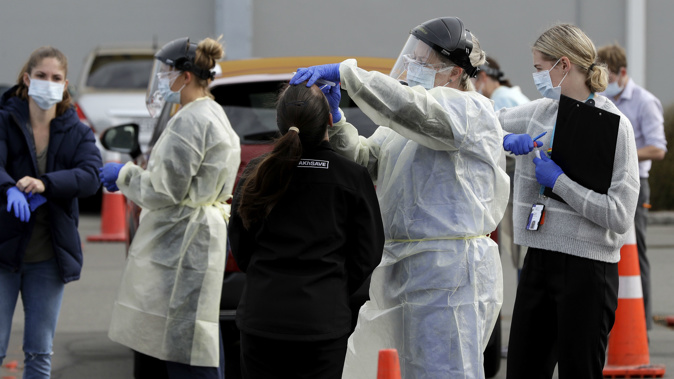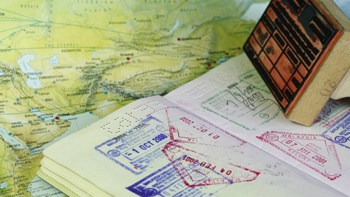
New modelling has indicated that New Zealand got it right by locking down – and that other countries battling Covid-19 can learn from our example. It's also suggested that our rate of virus reproduction – currently below 0.5 – has put us on track for stamping out Covid-19, if not containing it. Science reporter Jamie Morton talked through the data with mathematical modeller Rachelle Binny of Manaaki Whenua-Landcare Research and Te Pūnaha Matatini.
Your model looks at Covid-19 rates in New Zealand and 24 other countries, among them, Japan, Singapore, South Korea, Italy, Hong Kong, Ireland, Iceland, Norway, Sweden, Switzerland, France and the UK. Can you explain why you made this model, and how you created it?
An important measure for modelling epidemics is the effective reproduction number, sometimes written as effective "R0", which is a measure of transmission potential for a virus.
It is the average number of people that are directly infected by a single infectious individual. We use a commonly employed approach to estimate this effective R0 number from daily case data for Covid-19 in other countries.
We chose countries that had reported the highest cumulative case numbers of Covid-19, supplemented with countries that were of interest due to their testing or intervention strategy.
For example, Iceland has been using a contact tracing app - which tracks movements to help identify users that have encountered someone infected with Covid-19 - along with extremely widespread testing.
We were interested to see whether these approaches had successfully reduced transmission.
Can you discuss your general findings? I'm specifically interested in how you showed the virus could die out if the R0 is pushed below one.
Well known modelling theory developed for past epidemics, for example malaria, tells us that when R0 is more than one a virus is likely to outbreak.
However, an R0 value less than one suggests the number of cases will decline. Early estimates from studies using case data from Wuhan, China placed R0 at about 3, on average.
This suggests that, in the absence of any control measures, a person infected with Covid-19 will spread the infection to another three people on average, causing an outbreak of cases.
These high estimates led other countries experiencing local transmission of Covid-19 to implement measures to try to contain the virus by reducing R0.
However, the timing and strength of these interventions varied substantially so countries have experienced varying degrees of success.
Our findings show that interventions in other countries have consistently decreased the transmission potential of Covid-19 and that strong interventions, equivalent to New Zealand's Alert levels 3-4, can reduce R0 to values below the outbreak threshold (R0 = 1).
In general, countries who acted quickly – like Australia and Denmark - have had more success in keeping their case numbers at lower levels, while those who were slower to implement strong interventions, like the UK and Italy, are typically experiencing considerably higher cases and deaths.
Effective R0 estimates reported in this and other studies vary a lot because of differences between countries - like differences in demography or the timing and stringency of interventions - as well as differences in modelling approaches.
However, our results show reasonable agreement with what is reported elsewhere and place these findings in the context of New Zealand's alert level system so that they can be used to inform policy and decision making here.
Last week, Prime Minister Jacinda Ardern told us the R0 has been reduced to less than 0.5. How does this set us up for controlling and eliminating Covid-19?
An R0 number less than one is an encouraging sign that New Zealand's alert level 4 is containing the spread of the virus, as has been seen in some - but not all - other countries in lockdown.
It means that we can expect our daily case numbers to continue to decline while we remain in alert level 4.
Having low case numbers before moving into alert level 3, along with fast case isolation, will improve our chances of containing or even eliminating Covid-19.
If daily case numbers do drop to zero, we'll also need good systems in place for testing, to be confident that elimination has been achieved.
Is it somewhat relieving and validating to see this data now, after New Zealand already took the step of a full lockdown?
Seeing these global data, Aotearoa New Zealand certainly looks like a good place to be.
We were very quick to move into alert level 4 compared to other countries experiencing outbreaks, which meant our case numbers declined to low levels relatively quickly.
Countries that were slower to act were further into their outbreak and, as a result, it is taking considerably longer to reduce case numbers back down to low levels.
Even if they have now managed to control transmission to a level where daily cases and deaths are declining, these numbers remain in the thousands for many countries.
That said, are there any cautions or caveats that come with this data?
Our approach makes some simplifying assumptions, for example, we assume the time it takes for an individual to go from becoming infected to infecting someone else is five days on average.
This method cannot account for asymptomatic individuals who typically do not appear in case data but may still contribute to transmission.
Countries also take different approaches to testing and reporting, resulting in different levels of under-reporting of symptomatic cases.
This makes it challenging to compare between countries and means the real transmission of Covid-19 could be higher than our estimates.
There are also a wide range of social, political and cultural factors at play, so the reductions in R0 we've seen for alert Levels 1-4 in other countries may not be directly applicable to New Zealand.
However, New Zealand has not spent enough time in alert Levels 1-3 to be able to reliably say what their effect will be on transmission here.
In the meantime, looking at international cases provides a useful range of values that can be fed into models for predicting the spread of Covid-19 in New Zealand as we move into alert Level 3 and beyond.
Over the coming weeks, if case numbers stay low and continue to decline, we can be more certain that Covid-19 is being contained. However, unless we achieve elimination, there is still a risk of an outbreak occurring in the future.
Based on what we've seen in other countries, if interventions are strong enough to reduce R0 below one, then they tend to stay below this threshold so long as those interventions remain in place.
Some countries in alert Level 3 have managed to reduce R0 below 1, particularly countries with fast contact tracing and those with low case numbers.
This is a good sign for New Zealand because our case numbers have declined to comparatively low levels since moving into alert Level 4.
However, as other countries start to relax their lockdowns and move into lower alert levels, we will be regularly updating our estimates to closely monitor their ongoing effectiveness for containing Covid-19.
Take your Radio, Podcasts and Music with you









